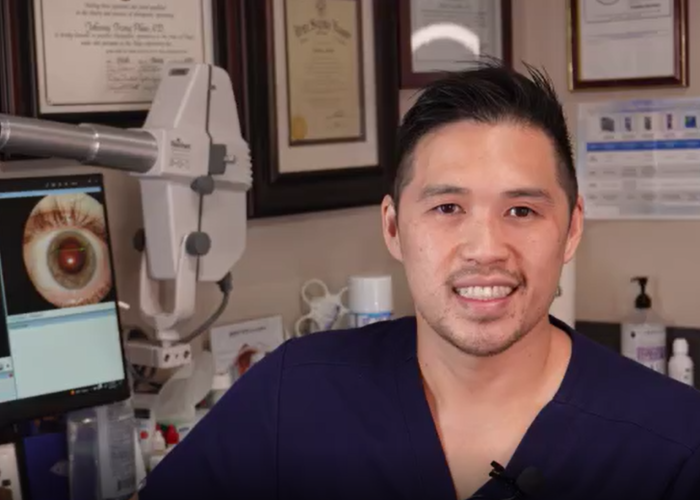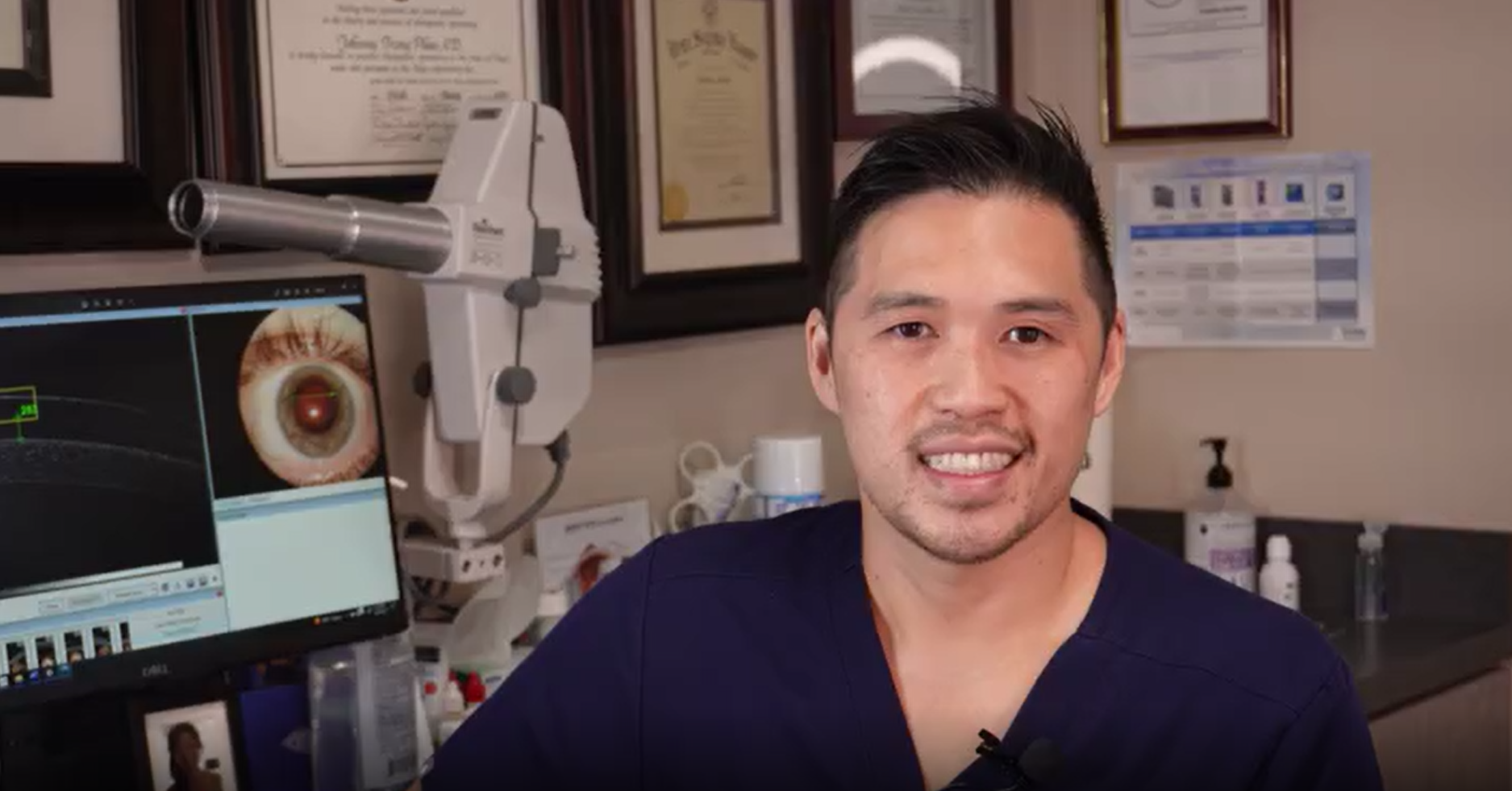Blue light is emitted from a number of sources, some of which include sunlight, tablets, cell phones, televisions, laptops, and fluorescent lights.
With the excessive amount of electronic devices available to the public it is important to express the potential harms of blue light. Recent studies have shown that blue light can disturb the sleep cycle and may cause harm to your eyes over time. Moderate exposure to blue light can disrupt the ability to fall asleep as a result of suppressed production of melatonin (Hormone that is responsible for sleep and waking). Ultimately this suppression interrupts the circadian rhythms during the sleep cycle. Additionally, blue wavelength light can increase the risk for an eye disorder known as macular degeneration. Due to protective pigment differences, absorption of blue light and most ultraviolet light is higher in children when compared to adults. Studies have shown that 50% of ultraviolet light exposure and absorption occurs before the age of 18, making the importance of protection greater in children.
There are several lenses now available to protect the eye from blue light and ultraviolet light, which allow for the filtration of these particular light rays. Use of protective screens and eyewear is imperative in order to decrease the amount of exposure from blue light emitting digital devices. It is also recommended to decrease blue light exposure in the evenings before bed, to prevent changes in the sleep cycle.
Source: News-sentinel.com






